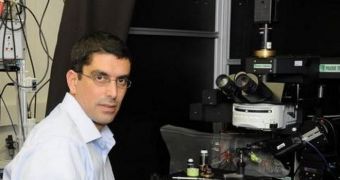Women who have just given birth to their children undergo a wide variety of alterations in their brain functions, which is the main mechanism through which instinctive mothering behaviors develop. The conclusion belongs to a new study published by experts at the Hebrew University of Jerusalem.
The changes in brain function have been linked to the emergence of a large number of new behaviors, which are collectively referred to as motherly instincts. Researchers have been trying to figure out how they appear for many years, but thus far their investigations have been in vein.
The investigation was led by researcher Dr. Adi Mizrahi, who holds joint appointments with the HUJ Edmond and Lily Safra Center for Brain Sciences, and the Silberman Institute of Life Sciences.
Details of the research were published in the latest issue of the esteemed medical journal Neuron, AlphaGalileo reports. The group, whose research was carried out in mice, also covered neural changes integrating odors and sounds, which developed in the brains of new mouse mothers.
“We know that distinct brain changes are linked with motherhood, but the impact of these changes on sensory processing and the emergence of maternal behaviors are largely unknown,” Mizrahi reveals.
“In mice, olfactory and auditory cues play a major role in the communication between a mother and her pups. Therefore, we hypothesized that there may be some interaction between olfactory and auditory processing so that pup odors might modulate the way pup calls are processed in the mother’s brain,” he adds.
The research team decided to check whether a region of the brain involved in sound recognition, called the primary auditory cortex, was playing a role in priming the mother to hear her pups' calls and sense their individual odors.
Interestingly, the team found that auditory processing chances occurred in response to odor only in the brains of females that were allowed to spend time with their pups. Lactating mothers exhibited the same type of olfactory-auditory integration immediately after birth.
“We have shown that motherhood is associated with a rapid and robust appearance of olfactory-auditory integration in the primary auditory cortex occurring along with stimulus-specific adaptation to pup distress calls,” Dr. Mizrahi explains.
“These processes help to explain how changes in neocortical networks facilitate efficient detection of pups by their caring mothers,” the investigator concludes.

 14 DAY TRIAL //
14 DAY TRIAL //